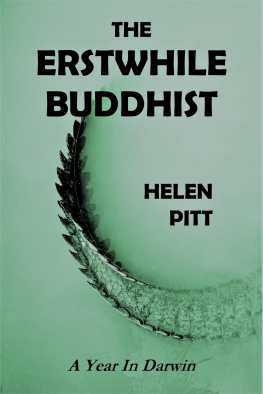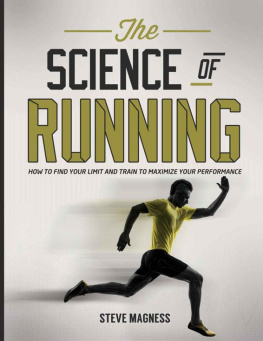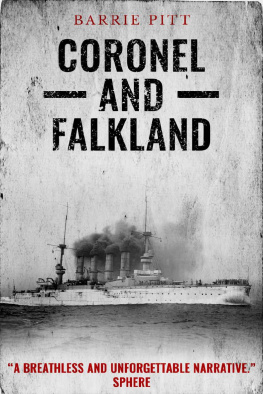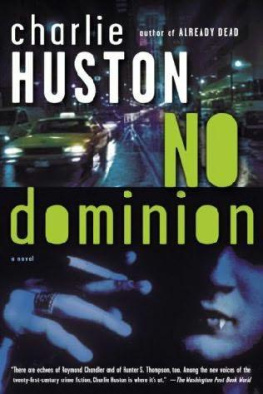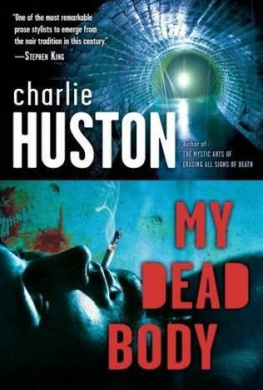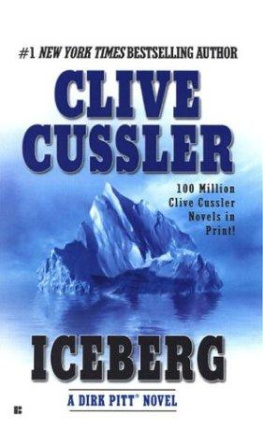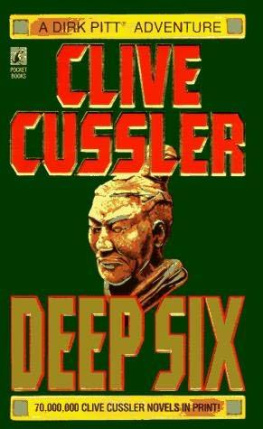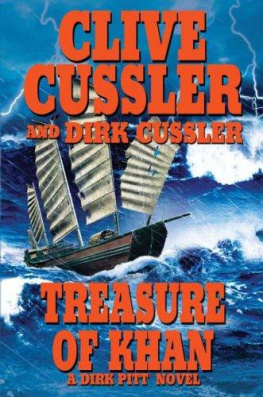Steve Pitt - Running to Extremes
Here you can read online Steve Pitt - Running to Extremes full text of the book (entire story) in english for free. Download pdf and epub, get meaning, cover and reviews about this ebook. year: 2011, publisher: Puffin Canada, genre: Detective and thriller. Description of the work, (preface) as well as reviews are available. Best literature library LitArk.com created for fans of good reading and offers a wide selection of genres:
Romance novel
Science fiction
Adventure
Detective
Science
History
Home and family
Prose
Art
Politics
Computer
Non-fiction
Religion
Business
Children
Humor
Choose a favorite category and find really read worthwhile books. Enjoy immersion in the world of imagination, feel the emotions of the characters or learn something new for yourself, make an fascinating discovery.
- Book:Running to Extremes
- Author:
- Publisher:Puffin Canada
- Genre:
- Year:2011
- Rating:5 / 5
- Favourites:Add to favourites
- Your mark:
- 100
- 1
- 2
- 3
- 4
- 5
Running to Extremes: summary, description and annotation
We offer to read an annotation, description, summary or preface (depends on what the author of the book "Running to Extremes" wrote himself). If you haven't found the necessary information about the book — write in the comments, we will try to find it.
Steve Pitt: author's other books
Who wrote Running to Extremes? Find out the surname, the name of the author of the book and a list of all author's works by series.
Running to Extremes — read online for free the complete book (whole text) full work
Below is the text of the book, divided by pages. System saving the place of the last page read, allows you to conveniently read the book "Running to Extremes" online for free, without having to search again every time where you left off. Put a bookmark, and you can go to the page where you finished reading at any time.
Font size:
Interval:
Bookmark:
PUFFIN CANADA
RUNNING TO EXTREMES
STEVE PITT is a childrens author and magazine writer whose non-fiction book Rain Tonight: A Tale of Hurricane Hazel was shortlisted for several Childrens Choice Awards in Canada, including the Silver Birch Award. His novel Faster Than Wind was shortlisted for the Manitoba Young Readers Award. He lives in Rutherglen, Ontario.
ALSO BY STEVE PITT
Rain Tonight: A Tale of Hurricane Hazel
Guyness: Deal With It Body and Soul
Teasing: Deal With It Before the Joke Is OnYou
To Stand and Fight Together: Richard Pierpoint and the Coloured Corps of Upper Canada
The Day of the Flying Fox: The True Story of World War II Pilot Charlie Fox
Faster Than Wind

PUFFIN CANADA
Published by the Penguin Group
Penguin Group (Canada), 90 Eglinton Avenue East, Suite 700, Toronto, Ontario, Canada M4P 2Y3 (a division of Pearson Canada Inc.)
Penguin Group (USA) Inc., 375 Hudson Street, New York, New York 10014, U.S.A.
Penguin Books Ltd, 80 Strand, London WC2R 0RL, England
Penguin Ireland, 25 St Stephens Green, Dublin 2, Ireland (a division of Penguin Books Ltd)
Penguin Group (Australia), 250 Camberwell Road, Camberwell, Victoria 3124, Australia (a division of Pearson Australia Group Pty Ltd)
Penguin Books India Pvt Ltd, 11 Community Centre, Panchsheel Park, New Delhi 110 017, India
Penguin Group (NZ), 67 Apollo Drive, Rosedale, Auckland 0632, New Zealand (a division of Pearson New Zealand Ltd)
Penguin Books (South Africa) (Pty) Ltd, 24 Sturdee Avenue, Rosebank, Johannesburg 2196, South Africa
Penguin Books Ltd, Registered Offices: 80 Strand, London WC2R 0RL, England
First published 2011
1 2 3 4 5 6 7 8 9 10 (WEB)
Copyright Steve Pitt, 2011
All rights reserved. Without limiting the rights under copyright reserved above, no part of this publication may be reproduced, stored in or introduced into a retrieval system, or transmitted in any form or by any means (electronic, mechanical, photocopying, recording or otherwise), without the prior written permission of both the copyright owner and the above publisher of this book.
Manufactured in Canada.
LIBRARY AND ARCHIVES CANADA CATALOGUING IN PUBLICATION
Pitt, Steve, 1954
Running to extremes : Ray Zahabs amazing ultramarathon journey / Steve Pitt ; with Ray Zahab.
ISBN 978-0-14-317967-2
1. Zahab, Ray, 1969 Juvenile literature. 2. Marathon runningJuvenile literature. 3. Runners (Sports)CanadaBiographyJuvenile literature.
I. Zahab, Ray, 1969 II. Title.
GV1061.15.Z34P58 2011 j796.4252092 C2011-902356-3
Visit the Penguin Group (Canada) website at www.penguin.ca
Special and corporate bulk purchase rates available; please see www.penguin.ca/corporatesales or call 1-800-810-3104, ext. 2477 or 2474
For my wife, Kathy, our daughters, Mia Sahara and Anika Ixa, and fellow runner Patrick Doyle
Ray Zahab
CONTENTS
ONE
LAST AGAIN
T he cabin began to point downward almost as soon as the airliner had levelled off from its climb into the skies over Vancouver. Compared to the six-hour cross-country flight from Ontario to British Columbia, this connecting trip to Whitehorse, Yukon Territory, was going to be very short. Ray Zahab sat in his window seat and watched the mighty Rocky Mountains pass by below like so many snow-covered anthills.
This is crazy, a voice said.
Ray ignored it. That was the Old Ray talking.
Its freezing down there. Way below zero, the voice reminded him.
Ray tried to take no notice, but there was more than a little truth to what the Old Ray was saying. He was about to attempt something that would sound impossible to any sane person: running 160 kilometres (100 miles) through the Arctic snow at temperatures so cold that exposed skin could freeze in a matter of seconds. Even the thought of it made Rays knees feel weak, but he had promised all his friends and family that he would try his very best to finish this race.
The crazy thing was that Ray wasnt even an experienced long-distance runner. But here he was, about to enter an ultramarathon, an event that would push even the most highly trained runners to their physical limits. An ordinary marathon race was impressive enough. Legend has it that twenty-five hundred years ago, a Greek soldier named Pheidippides ran 40 kilometres (25 miles) from a place in Greece called Marathon to the city of Athens to tell his countrymen that their army had triumphed in battle over a much larger Persian force. And as soon as he delivered his message he dropped dead from the strain!
Since then, marathon races have been the gold standard of long-distance racing. The marathon is traditionally the main event of the Olympics, and almost every major city in the world holds an annual marathon race. For most participants, finishing one of these races is an amazing accomplishment in itself. Rays race would be three times as long, in snow and at temperatures that never rose above freezing.
But even a full marathon isnt the limit of human running endurance. People have been known to run more than twice a marathons distance in one day, and sometimes they keep running extreme distances for several days in a row. These incredible races became known as ultramarathons. Originally, most ultramarathons were 50 or 100 kilometres (30 or 60 miles) long, but some eventually covered thousands of kilometres and took several weeks to complete.
Ultramarathons became extremely popular events in the nineteenth and early twentieth centuries. In the United States and Europe, Six Day, Go As You Please races were held in huge indoor stadiums like Madison Square Garden in New York City. Organizers made a fortune selling tickets to sports fans who would cheer their favourite competitors as they ran or walked as many laps as they could over the span of six days. The winners collected their share of the profits. In 1880, a Haitian-born African American by the name of Frank Hart won $17,000 for covering 909 kilometres (565 miles) in six days.
Other races were sponsored by publishers to sell newspapers or by sports promoters who sold souvenir books, trinkets and foot ointments to the tens of thousands of spectators who lined the route. In 1927, Lon Scott, an American sports promoter, organized a race across the United States, from Los Angeles to New York City, to celebrate the opening of Route 66, the first highway to span North America from coast to coast. First prize was $25,000, which was a tremendous fortune at the time. Despite the hefty $100 entrance fee, the race attracted nearly three hundred athletes from around the world, including Britains Arthur F.H. Newman, Canadas Phillip Granville and Finlands Nestor Erickson, who were among the most famous runners of the day. More than seventy racers quit the first day, and by the end of the first week, the field had narrowed to just 145. Despite the star-studded competition, it was Andy Payne, a twenty-year-old First Nations man from Oklahoma, who won the race, completing the 5,507-kilometre (3,422-mile) course in 573 hours, 4 minutes and 34 seconds, or almost twenty-four days.
By the 1930s, however, Sunday afternoon sporting events such as professional baseball, hockey, football, boxing and basketball had begun to overshadow long-distance-running events, which often took days or even weeks to complete. The remarkable prize money dried up, and only the dedication of a few hundred extreme runners around the world kept the sport alive. Ultramarathon races transformed from money events to personal challenges.
Anyone is welcome to try an ultramarathon, but few people can endure the hardships of running such long distances day after day. Some races take place over a series of days; some are run in both daytime and nighttime conditions. Many ultramarathons are held in extreme locations, like mountain ranges and deserts, the Arctic tundra and tropical rainforests. A few runners have even completed the ultramarathon grand slam, which means they have competed on all seven continents and at both poles.
Next pageFont size:
Interval:
Bookmark:
Similar books «Running to Extremes»
Look at similar books to Running to Extremes. We have selected literature similar in name and meaning in the hope of providing readers with more options to find new, interesting, not yet read works.
Discussion, reviews of the book Running to Extremes and just readers' own opinions. Leave your comments, write what you think about the work, its meaning or the main characters. Specify what exactly you liked and what you didn't like, and why you think so.



